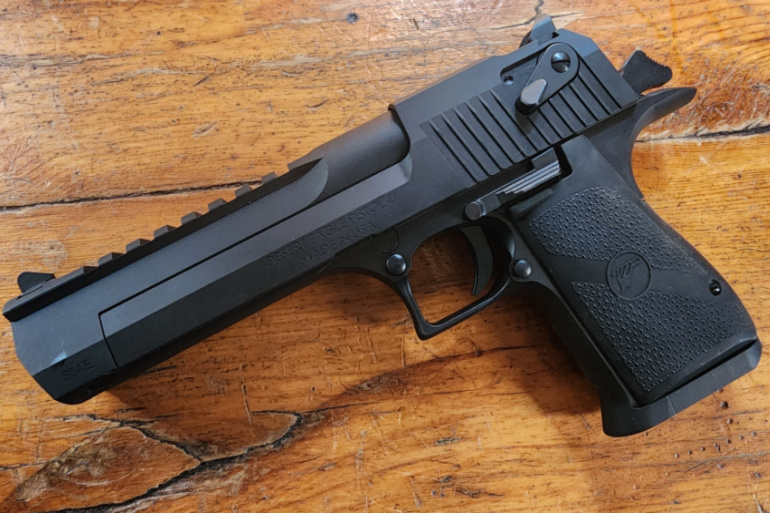
Ask any gun owner what model is a Really, Really Big Handgun and you’re likely to get the same reply: the Desert Eagle. There’s no denying Magnum Research’s Desert Eagle is a big handgun, but it’s also more than just a conversation piece. It has its uses, not to mention its design is cool. Interested? You should be.
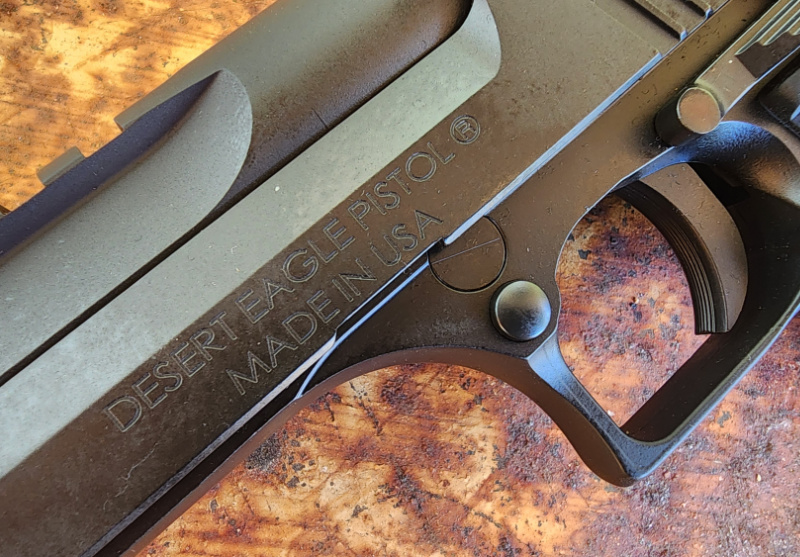
What’s the Magnum Research Desert Eagle?
The Desert Eagle is a family of handguns designed and manufactured by Magnum Research. It’s been made in several calibers including its 429 DE, .44 Magnum, and .357 Magnum, but it’s the classic 50 AE chambering that most people think of first when they think of the Deagle. Yes, this is first and foremost a .50 caliber pistol.
It was the early 1980s when the Desert Eagle was first designed. The patent was filed in 1983, so it’s not new. This is a gun that’s proven itself capable of reliability and accuracy over decades of use. It’s also a fascinating gun thanks in large part to its action.
Unlike many handguns with their Browning short recoil or blowback actions, the Desert Eagle has an operating system like the gas systems found on some rifles. It’s a gas-actuated, hammer-fired pistol, and the entire slide assembly doesn’t move during recoil—only the rearmost portion does. To accommodate that, the slide has two pieces, one that remains fixed on the forward portion of the gun over the barrel and the other at the back that recoils.
The Desert Eagle’s design is bulky, but that’s necessary to handle the larger cartridges it fires. That mass also helps to mitigate the felt recoil generated by firing 50 AE rounds (and feel them you will). The Desert Eagle is fantastically well-made and specifically designed for superior big-bore performance…which it accomplishes quite well.
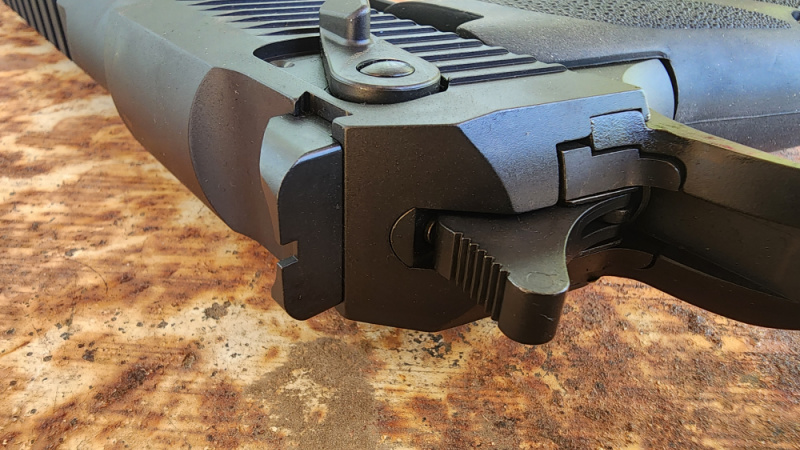
What are the specifications of the Magnum Research Desert Eagle?
Because it’s such a classic, we’re going to cover the 50 AE chambering here, which is the version we tested. The others just wouldn’t be quite as fun. The Deagle is a gas-operated, rotating bolt, hammer-fired handgun.
The 50 AE (AE stands for Action Express) chambering originally hit the States with a .510-inch bullet diameter, but that had to be reduced to .500-inches to comply with the ATF’s requirements for destructive devices. (Don’t worry, the loss of 0.010 inches of diameter didn’t hurt anything, although we’re still a little bitter about it.) The 50 AE cartridge has a maximum pressure of 36,000 psi, which isn’t as much as you might think. For comparison, consider that the standard 9x19mm Parabellum round has a SAAMI maximum pressure of 35,000 psi and 10mm Auto has a maximum of 37,500 psi.
This Desert Eagle has a 6-inch barrel with a .495-inch bore diameter made from high-quality carbon steel. It has to be high quality to withstand that admittedly punishing caliber, and Magnum Research clearly puts a lot of effort into quality control. The gun has an overall length of 10.75-inches and a height of 6.25-inches.
Trigger reach is 2.75-inches which works for most hand sizes. The iron sight radius is 8.5-inches, and it has an overall empty weight of 4 pounds, 6 ounces (and it gets heavier when loaded). Capacity is 7 +1, and when you’re talking 50 AE, and that’s plenty.
The gun has a Weaver-style accessory rail on the upper forward, fixed portion of the gun so you can add an optic if you don’t want to run irons. I’ve shot Desert Eagles both with and without red dots, and it’s really just a matter of preference in most cases. The exception is the times I’ve hunted with them when I really like to use red dots.
The Desert Eagle line has grown to include a variety of models and finishes over the years. Surprisingly, there’s even a California-approved model, so if you reside in the Golden State and want a seriously tough handgun, you’re covered.
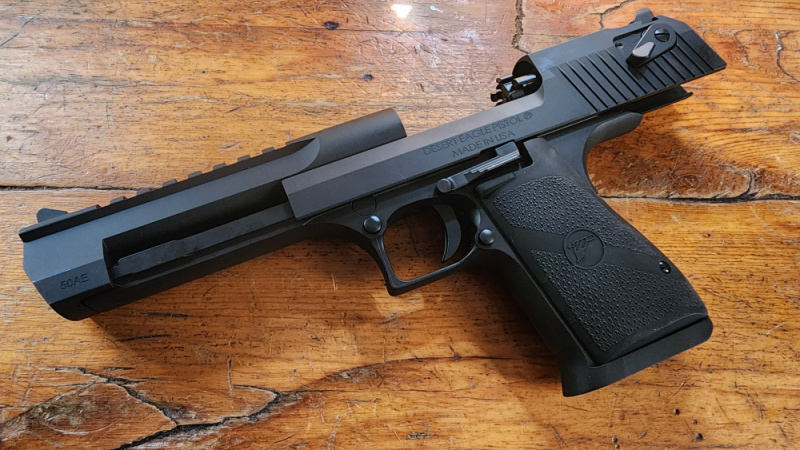
How does the Desert Eagle shoot?
Right off I’ll say the 50 AE chambered Desert Eagle is a smoother shooter than most people anticipate. That doesn’t mean felt recoil and muzzle rise aren’t significant — because they are — only that it isn’t nearly as punishing as rumors have it. The gun has a slide width of 1.25 inches and the grip measures more than five inches around. That makes it more challenging to grip for those with smaller hands. Regardless, rubber grip panels and a smooth shape make it possible to keep a comfortable two-handed firing grip on this beast.
The recoil of the Desert Eagle in 50 AE is stout, but manageable because the gun’s weight and its design. That makes it easier to control than many expect. If you want to shoot rapid fire you’re going to need some practice, but it’s doable. The Deagle is a generally accurate gun but not really precise. That shouldn’t be a shock. Your shots will be on target, but you’re not likely to produce many one-hole, five-shot groups. That tends not to really matter, though—you’ll hit your target with accuracy, and precision isn’t always necessary.
After years running this gun in different calibers, I’ve never experienced any failures. It feeds and cycles very reliably, although of course you’re getting that ammo straight from the gun maker (really, that’s a good way to ensure it works well). And while it’s a fun handgun to shoot, it can also be useful.
The Desert Eagle is effective on a variety of game including turkeys, deer, and hogs. The legality of what you can hunt with it depends on where you live, so check your local laws before you head into the woods. On deer, there’s no excessive meat loss, but on something like a turkey, it can be a bit much if you don’t pay close attention to shot placement. I find the Desert Eagle’s niche is really in hunting feral hogs. That’s an area where a significant wound cavity is appreciated, not something to be avoided. Whatever you use it for, it gets the job done and done with style.
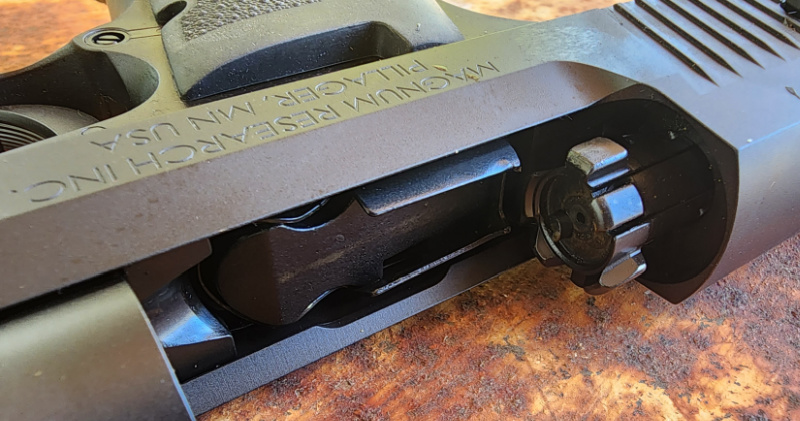
Should You Buy a Desert Eagle?
I’m a little biased here, but I tend to think everyone should own a big bore handgun, and the Desert Eagle is a great option. Not only is it exceptionally well made but it’s a lot of fun to shoot while also effective for hunting. It could also technically be used for home defense or as a truck gun (if you were so inclined).
The Magnum Research Desert Eagle in 50 AE is an extremely solid gun that can make a great addition to your gun collection. It’s not inexpensive and it’s definitely not a safe queen. This gun is definitely made to be used. And if you’re a gun geek like I am, its rotating bolt and overall function make it unique.
Whether you’re using the Deagle for fun big bore trigger time or for hunting, you can be assured it’s a solidly built, very effective handgun capable of holding up to serious use.
Specifications: Magnum Research Desert Eagle
Claiber: .50 AE (.44 Magnum and .357 Magnum also available)
Capacity: 7+1 (in.50 AE, 8+1 in .44 and .357)
Barrel Length: 6 inches
Overall Length: 10.75 inches
Height: 6.25 inches
Weight: 4 pounds, 6 ounces empty
MSRP: $1,917

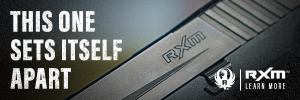
I know 3 people who own that gun, and every one of them have fired probably less than 50 rounds through it, in the 30+ years they have owned it.
They buy it, put a few magazines through it, and back in the case it goes…
I can’t justify owning one, but it’s still cool.
My younger brother bought one in 44 Mag back around 1990. By the time he was halfway through the second magazine, his shots were hitting the dirt between the target and himself, and getting farther down with each successive shot. I and the middle brother both already had experience with hoglegs (my Contender and his Redhawk), so we were able to shoot it pretty well, but he developed such a bad flinch that he couldn’t shoot it. So, off he goes back to the store and traded it in on a Dan Wesson revolver in 445 SuperMag and a Browning BuckMark. I know, I don’t get it either, but there it is. I ended up buying the revolver from him some years later, and have since added a 4″ barrel.